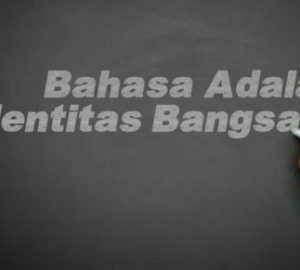Pesantren tradition and the classical islamic books (known also; kitab kuning – yellow books) face problems with the weakening of teaching or book study as a characteristic of pesantren education both seen from the kiai’s or santri’s chosen books, this may be caused by a shift in the orientation of pesantren which tends to adopt needs in the present context. For example, modernizing pesantren lessons by including general subjects so that classical islamic books studies as a characteristic of pesantren are weakened.
Of course this is not a conclusion that is just accepted, there may be pesantren that still have very good traditions in such studies that can be used as a model for the revitalization of the text study tradition in boarding schools, therefore further research is needed for pesantren that still hold classical islamic books study tradition.
The importance of research on Islamic boarding schools with all the ins and outs is also pointed out by van Bruinessen (1995: 17) and Dhofier (2011: 86) who argue that the text (sometimes often called “kitab kuning”) is one of the important elements of pesantren, the book is also the source of construction of the knowledge and civilization of the santri, the pesantren is not complete without books so that it can be said that the pesantren tradition and civilization are book traditions and civilizations, so it is important to see how the current book study tradition in textual and contextual literature.
The survey or research of books taught in Islamic boarding schools has been carried out by the Ministry of Religion starting in 1977 until now, the results of research by Sofia University Australia succeeded in collecting books in Southeast Asia reaching 2569 book catalogs. The word “kitab” comes from Arabic, which is Kitabun in Indonesian, means book, in the context of pesantren, it usually refers to Arabic-written books that contain various aspects of Islamic science such as Tawheed Science, Fiqh, Akhlaq, Tasawuf, history, Language science (Nahwu and Shorof) , Grammar (Science Mantiq) (Van Bruinessen, 1995: 131-132).
Although written in Arabic, not all the books used in the pesantren speak Arabic, sometimes there are also Malay-speaking (Letter Jawi). There are also those who speak Javanese or Sundanese (Letter Pegon), but all of them are still written in Arabic. Well, these local languages (Malay, Javanese and Sundanese) sometimes become the main text (Matan), sometimes also become syarah (explanation) or just become a translation of the main text (Ma’na Jenggot).
The word “book” is usually also added with the word “yellow” behind it. It is called yellow because it usually uses yellow paper which was brought from the Middle East at the beginning of the 20th century. Indeed there is no particular characteristic that distinguishes between “Yellow Book” and “White Book” in addition to the differences on the paper only, because all of them contain Islamic sciences written from the 10th to the 15th century.
But the book (yellow) is already well known among pesantren so that people feel incomplete if they do not call the yellow book for the same meaning as a book of Islamic knowledge. Kitab is the root of the Islamic tradition of tradition in the archipelago where the pesantren is its institution, through pesantren, access to books containing Islamic science in Arabic becomes open, especially with the number of translations and making syarah (explanations or comments on a book) by pesantren leaders.
With the translation and making of the syarah, there was an adaptation in the form of readers’ responses to the book in the form of copying, translation, explanation and adaptation (vernacular) from here, then the text transformation and reproduction of books from Arabic into Javanese then into Malay and Sundanese.
Basically the yellow book tradition is clearly not from Indonesia, all the classical books studied in Indonesia come from Arabic books written before Islam spread in Indonesia. Likewise the syarah book (explanation) of classical books also comes from Arabic, although many are also written by Indonesian scholars but still the source of the text is Arabic.
In addition, the typical pattern of pesantren institutions resembles those of the madrasa (Kuttab) in the Middle East and India, this is evident from almost all the great kyai completing their religious education in Arabic, even in the 17th and 18th centuries there was a network between scholars in Middle East and Nusantara (Azra, 2007).
As is known, there are two types of Islamic boarding schools namely “Salafiyyah Islamic Boarding School” (Traditional) and “Kholafiyah Islamic Boarding School” (Modern). Islamic boarding schools that are characterized by Salaf are characterized by several characteristics, namely: first, using classical books as the core of their education. Second, the curriculum is material specifically for religious studies. Third, the teaching system is individual (Sorogan) and classical (Bandongan, Wetonan and Halaqoh).
The characteristics of Islamic boarding schools that are patterned Kholaf are; First, the curriculum consists of religion and general. Secondly, in the pesantren environment, there are public schools. Thirdly, sometimes it does not teach the classical book (Yellow Book) (Dhofier 2011: 76), it appears that the two types of pesantren still use the book as one source of learning even though there are differences in the typology of pesantren above, according to some opinions of the kyai more relevant, because the most important thing is the beneficial knowledge of santri.
If the pesantren and its books are considered as a wealth of Islamic tradition in Indonesia, then the need for us to preserve this tradition has been built firmly since centuries ago and uses it to stem the negative aspects of the flow of modernization in all fields, but the problems of the santri studying the book collides with the murodif of the book itself so that innovation from the pesantren leader is needed to find a method so that the santri can easily understand it.
This is the main factor carried out by Mama K.H. Ahmad Makki in the initial purpose of translating and explaining the yellow book into Sundanese and Indonesian language, armed with enthusiasm and high hopes, he translated the classical books by scholars and was motivated by the desire that the santri when returning to their respective regions had logath, information and the initial explanation is neatly arranged.
Then Mama K.H. Ahmad Makki began in 1988 to print books in Sundanese and Indonesian languages, until now there are no less than 180 items of Sundanese translation books and 60 items of Indonesian translation books that have been printed. Positive responses from the community, santri, religious teachers and clerics flowed from various regions in Indonesia as well as responses from clerics from other countries, Alhamdulillah.
He advised the students to love reading, writing and working. The saying says, elephants die leaving ivory, dead tigers leave stripes, humans die leaving copyrighted works. Do good deeds for others so that they will be remembered for all time.
Artikel ini juga tersedia dalam bahasa:
 Indonesian
Indonesian





